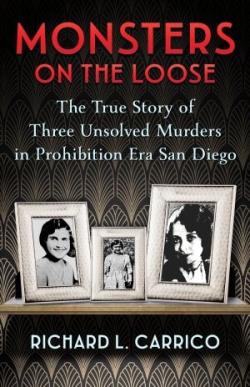April 2025 Articles
MONSTERS ON THE LOOSE: THE TRUE STORY OF THREE UNSOLVED MURDERS IN PROHIBITION-ERA SAN DIEGO

By Richard Carrico
Reviewed by Pennell Paugh
April 2, 2025 (San Diego) - San Diego denizen and resident Richard L. Carrico pieces fragments of evidence together for cold cases, while shedding light on a dark chapter in San Diego's history.
Monsters on the Loose tells the tragic, true stories of three females who were murdered early in 1931: Virginia Brooks, Louise Teuber, and Hazel Bradshaw.
CITY OF EL CAJON ANNOUNCES NEW ONLINE GOALS DASHBOARD

Source: City of El Cajon
April 1, 2025 (El Cajon) - The City of El Cajon is excited to announce the launch of a new online dashboard, providing residents with real-time updates on the progress of the City Council’s 2025 Action Plan. This innovative tool offers transparency and insight into the City’s priorities and ongoing initiatives. Residents can explore the dashboard at https://www.elcajon.gov/your-government/elected-officials/2025-city-council-action-plan
- Read more about CITY OF EL CAJON ANNOUNCES NEW ONLINE GOALS DASHBOARD
- Log in or register to post comments

